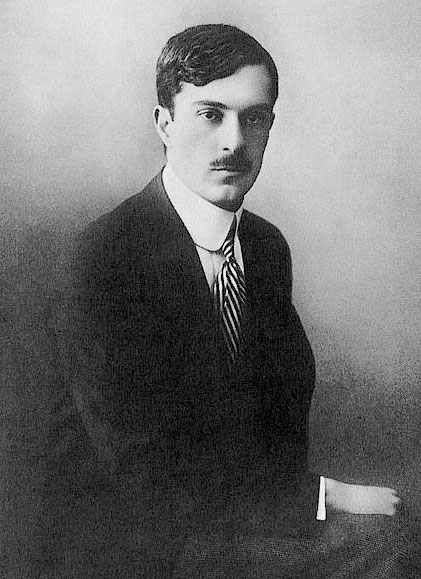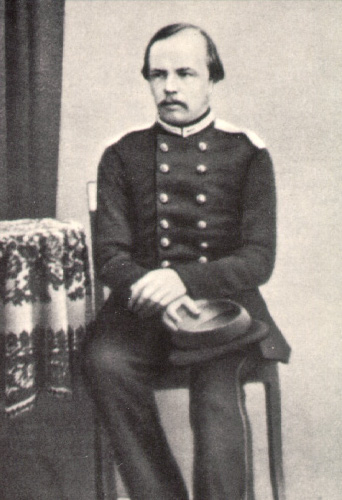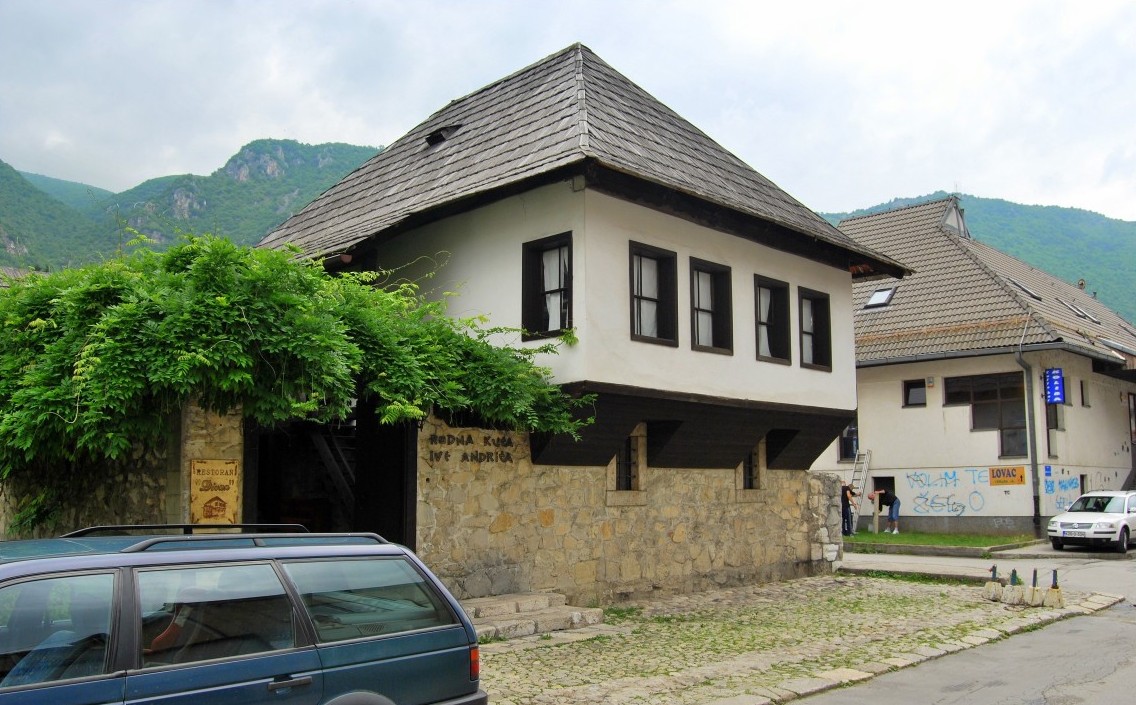|
Milan Kašanin
Milan Kašanin ( sr-cyr, Милан Кашанин; 21 February 1895 – 22 November 1981) was a Serbian art historian, art critic, curator and writer. He served as the head of three Belgrade based museums, the Museum of Prince Pavle (the modern-day National Museum of Serbia), the Museum of Contemporary Art and the Gallery of Frescoes. Biography Of humble origins, Kašanin adopted his mother's surname because he was born out of wedlock. Granted a scholarship, he studied art history at the Sorbonne. With the dissertation ''Bela crkva Karanska'' (The White Church of Karan), Kašanin obtained his PhD from the University of Belgrade in 1926. He was curator at the Museum of Contemporary Art, director of the Museum of Prince Pavle (the modern-day National Museum of Serbia) and the Gallery of Frescoes in Belgrade. He is also known as one of the organizers of some of the first major European art exhibitions in Belgrade, ''The Italian Portrait Through the Ages'', in 1938, and ''French Paint ... [...More Info...] [...Related Items...] OR: [Wikipedia] [Google] [Baidu] |
Kunsthistorisches Museum
The Kunsthistorisches Museum ( "Museum of Art History", often referred to as the "Museum of Fine Arts") is an art museum in Vienna, Austria. Housed in its festive palatial building on the Vienna Ring Road, it is crowned with an octagonal dome. The term ''Kunsthistorisches Museum'' applies to both the institution and the main building. It is the largest art museum in the country and one of the most important museums worldwide. Emperor Franz Joseph I of Austria-Hungary opened the facility around 1891 at the same time as the Natural History Museum, Vienna which has a similar design and is directly across Maria-Theresien-Platz. The two buildings were constructed between 1871 and 1891 according to plans by Gottfried Semper and Baron Karl von Hasenauer. The emperor commissioned the two Ringstraße museums to create a suitable home for the Habsburgs' formidable art collection and to make it accessible to the general public. The buildings are rectangular in shape, with symmet ... [...More Info...] [...Related Items...] OR: [Wikipedia] [Google] [Baidu] |
Veljko Petrović (poet)
Veljko Petrović (Serbian Cyrillic: Вељко Петровић; Sombor, Serbia, 4 February 1884 - Belgrade, Serbia, Yugoslavia, 27 July 1967) was a Serbian poet, short story writer, diplomat, and academic. Biography Veljko Petrović was born in Sombor, Vojvodina, then part of Austria-Hungary, on 4 February 1884.His father George was a catechist from Sombor who became a monk after his wife's sudden death, taking the name of Gerasim in a monastery in 1891, and later went on to teach at the well-known seminary, Clerical Grande école of Saint Arsenije in Sremski Karlovci. Veljko's mother Mileva was the daughter of the Sombor parish priest Jovan Momirović. His mother died a few weeks after giving birth. Veljko Petrović had two older sisters, Vida and Andja, and a brother, Milivoj. He finished high school in his native Sombor. In 1902 he arrived in Budapest where he studied law. At the same time, he was a cadet of the first Serbian college, the Sava Tekelija Institute, better kn ... [...More Info...] [...Related Items...] OR: [Wikipedia] [Google] [Baidu] |
The Village Of Stepanchikovo
''The Village of Stepanchikovo and Its Inhabitants: From the Notes of an Unknown'' (russian: Село Степанчиково и его обитатели. Из записок неизвестного, ''Selo Stepanchikovo i ego obitateli. Iz zapisok neizvestnogo''), also known as ''The Friend of the Family'', is a novel written by Fyodor Dostoevsky and first published in 1859. Summary Sergey Alexandrovich (), the narrator, is summoned from St. Petersburg to the estate of his uncle, Colonel Yegor Ilyich Rostanev (), and finds that a middle-aged charlatan named Foma Fomich Opiskin () has swindled the nobles around him into believing that he is virtuous despite behavior that is passive-aggressive, selfish, and spiteful. Foma obliges the servants to learn French, and gets furious when they are caught dancing the '' kamarinskaya''. Uncle Yegor asks Sergey to marry the poor young girl Nastenka. It turns out Uncle Yegor is in love with her himself, but Foma wants him to marry ... [...More Info...] [...Related Items...] OR: [Wikipedia] [Google] [Baidu] |
Dostojevski
Fyodor Mikhailovich Dostoevsky (, ; rus, Фёдор Михайлович Достоевский, Fyódor Mikháylovich Dostoyévskiy, p=ˈfʲɵdər mʲɪˈxajləvʲɪdʑ dəstɐˈjefskʲɪj, a=ru-Dostoevsky.ogg, links=yes; 11 November 18219 February 1881), sometimes transliterated as Dostoyevsky, was a Russian novelist, short story writer, essayist and journalist. Dostoevsky's literary works explore the human condition in the troubled political, social, and spiritual atmospheres of 19th-century Russia, and engage with a variety of philosophical and religious themes. His most acclaimed novels include ''Crime and Punishment'' (1866), ''The Idiot'' (1869), ''Demons'' (1872), and ''The Brothers Karamazov'' (1880). His 1864 novella, ''Notes from Underground'', is considered to be one of the first works of existentialist literature. Numerous literary critics regard him as one of the greatest novelists in all of world literature, as many of his works are considered highly influen ... [...More Info...] [...Related Items...] OR: [Wikipedia] [Google] [Baidu] |
Amsterdam
Amsterdam ( , , , lit. ''The Dam on the River Amstel'') is the capital and most populous city of the Netherlands, with The Hague being the seat of government. It has a population of 907,976 within the city proper, 1,558,755 in the urban area and 2,480,394 in the metropolitan area. Located in the Dutch province of North Holland, Amsterdam is colloquially referred to as the "Venice of the North", for its large number of canals, now designated a UNESCO World Heritage Site. Amsterdam was founded at the mouth of the Amstel River that was dammed to control flooding; the city's name derives from the Amstel dam. Originally a small fishing village in the late 12th century, Amsterdam became a major world port during the Dutch Golden Age of the 17th century, when the Netherlands was an economic powerhouse. Amsterdam is the leading center for finance and trade, as well as a hub of production of secular art. In the 19th and 20th centuries, the city expanded and many new neighborho ... [...More Info...] [...Related Items...] OR: [Wikipedia] [Google] [Baidu] |
Novi Sad
Novi Sad ( sr-Cyrl, Нови Сад, ; hu, Újvidék, ; german: Neusatz; see below for other names) is the second largest city in Serbia and the capital of the autonomous province of Vojvodina. It is located in the southern portion of the Pannonian Plain on the border of the Bačka and Syrmia geographical regions. Lying on the banks of the Danube river, the city faces the northern slopes of Fruška Gora. , Novi Sad proper has a population of 231,798 while its urban area (including the adjacent settlements of Petrovaradin and Sremska Kamenica) comprises 277,522 inhabitants. The population of the administrative area of the city totals 341,625 people. Novi Sad was founded in 1694 when Serb merchants formed a colony across the Danube from the Petrovaradin Fortress, a strategic Habsburg military post. In subsequent centuries, it became an important trading, manufacturing and cultural centre, and has historically been dubbed ''the Serbian Athens''. The city was heavily devastat ... [...More Info...] [...Related Items...] OR: [Wikipedia] [Google] [Baidu] |
Order Of Polonia Restituta
The Order of Polonia Restituta ( pl, Order Odrodzenia Polski, en, Order of Restored Poland) is a Polish state order established 4 February 1921. It is conferred on both military and civilians as well as on foreigners for outstanding achievements in the fields of education, science, sport, culture, art, economics, national defense, social work, civil service, or for furthering good relations between countries. The Order of Polonia Restituta is sometimes regarded as Poland's successor to the ''Order of the Knights of Saint Stanislaus, Bishop and Martyr'', known as the Order of Saint Stanislaus, established in 1765 by Stanisław August Poniatowski, the last King of the Polish–Lithuanian Commonwealth, to honor supporters of the Polish crown. History When Poland regained its independence from the German Empire, Austro-Hungarian Empire, and Russian Empire in 1918, the new Polish government abolished the activities of the Order of Saint Stanislaus (Imperial House of Romanov) ... [...More Info...] [...Related Items...] OR: [Wikipedia] [Google] [Baidu] |
Order Of Orange-Nassau
The Order of Orange-Nassau ( nl, Orde van Oranje-Nassau, links=no) is a civil and military Dutch order of chivalry founded on 4 April 1892 by the queen regent, Emma of the Netherlands. The order is a chivalric order open to "everyone who has performed acts of special merits for society.” These are people who deserve appreciation and recognition from society for the special way in which they have carried out their activities. Titles, prefixes, or post-nominals are not used in the Netherlands – the only exception being the Military William Order. History In 1841 William II of the Netherlands, as Grand Duke of Luxembourg, created the Order of the Oak Crown. Although this was officially not a Dutch order, honours were regularly conferred on Dutch people. After the death of William III, Luxembourg, according to the Nassau Family Pact, became the domain of the other branch of the House of Nassau. In the Netherlands the need for a third order, beside the Military William ... [...More Info...] [...Related Items...] OR: [Wikipedia] [Google] [Baidu] |
Order Of The Yugoslav Crown
The Royal Order of the Yugoslav Crown was instituted by King Alexander I of Yugoslavia on 5 April 1930, to commemorate his changing of the name of the Kingdom of the Serbs, Croats and Slovenes The Kingdom of Yugoslavia ( sh-Latn-Cyrl, separator=" / ", Kraljevina Jugoslavija, Краљевина Југославија; sl, Kraljevina Jugoslavija) was a state in Southeast and Central Europe that existed from 1918 until 1941. From 1918 ... to the Kingdom of Yugoslavia. It continues as a dynastic order, with appointments currently made by Alexander, Crown Prince of Yugoslavia. History King Alexander ascended the Throne in 1921. During a political crisis in 1929 the strong separatist movements within the country forced the King to temporarily suspend the Constitution to declare a dictatorship and to place greater emphasis on national unity, which resulted in the name of the country to Yugoslavia. The order was awarded to Yugoslavian citizens who enhanced national unity or for mer ... [...More Info...] [...Related Items...] OR: [Wikipedia] [Google] [Baidu] |
Order Of St Sava
The Royal Order of St. Sava is an Order of merit, first awarded by the Kingdom of Serbia in 1883 and later by the Kingdom of Serbs, Croats and Slovenes, and the Kingdom of Yugoslavia. It was awarded to nationals and foreigners for meritorious achievements in the field of religion, education, science and the arts as well as for social and relief work. The order was abolished in 1945 with the proclamation of the People’s Federal Republic of Yugoslavia and the end of the monarchy. It continues as a dynastic order, with appointments currently made by Alexander, Crown Prince of Yugoslavia. An homonymous order was established in 1985, conferred by the Serbian Orthodox Church to ecclesiastic and secular persons with special merits. History of the state order The Order of Saint Sava was established by Milan I of Serbia, four years after the country gained independence and its transformation from a principality into a kingdom in March 1882. It was first awarded in January 1883 to recog ... [...More Info...] [...Related Items...] OR: [Wikipedia] [Google] [Baidu] |
Ivo Andrić
Ivo Andrić ( sr-Cyrl, Иво Андрић, ; born Ivan Andrić; 9 October 1892 – 13 March 1975) was a Yugoslav novelist, poet and short story writer who won the Nobel Prize in Literature in 1961. His writings dealt mainly with life in his native Bosnia under Ottoman rule. Born in Travnik in Austria-Hungary, modern-day Bosnia and Herzegovina, Andrić attended high school in Sarajevo, where he became an active member of several South Slav national youth organizations. Following the assassination of Archduke Franz Ferdinand in June 1914, Andrić was arrested and imprisoned by the Austro-Hungarian police, who suspected his involvement in the plot. As the authorities were unable to build a strong case against him, he spent much of the war under house arrest, only being released following a general amnesty for such cases in July 1917. After the war, he studied South Slavic history and literature at universities in Zagreb and Graz, eventually attaining his PhD. in Graz in 19 ... [...More Info...] [...Related Items...] OR: [Wikipedia] [Google] [Baidu] |
Anica Savić Rebac
Anica Savić-Rebac ( sr-Cyrl, Аница Савић-Ребац; 4 October 1892 — 7 October 1953) was a Serbian writer, classical philologist, translator, professor at the University of Belgrade. She wrote a number of essays and books about Njegoš, Goethe, Sophocles, Spinoza, Thomas Mann, Greek mystical philosophers, Plato, theory of literature. Svetlana SlapšakAnica Savić Rebac (1894 – 1953) Gegenworte - Zeitschrift für den Disput über Wissen, Berlin-Brandenburgischen Akademie der Wissenschaften, Lemmens Verlag, Berlin 2010.Petar II Petrović-Njegoš''The Ray of the Microcosm'' translated by Anica Savić Rebac, Svet Knjige, Beograd 2013. She also translated a number of works from Serbian into English, most notably '' The Ray of the Microcosm'' by Petar II Petrović-Njegoš. Anica Savić Rebac appears under the name of ''Milica'' in travel book '' Black Lamb and Grey Falcon'' by Rebecca West Dame Cicily Isabel Fairfield (21 December 1892 – 15 March 1983), kno ... [...More Info...] [...Related Items...] OR: [Wikipedia] [Google] [Baidu] |



.jpg)
.jpg)

.png)
